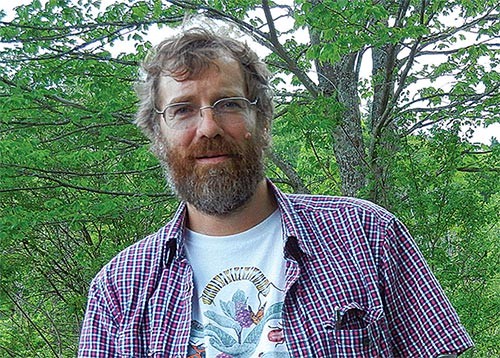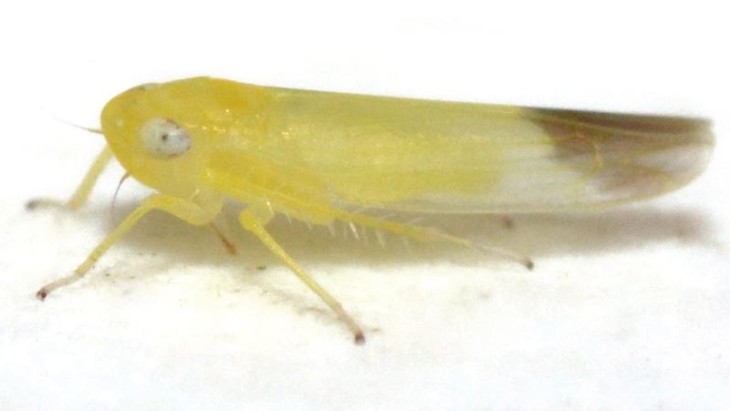“In the next years, all of the ash trees in the Hubbard Brook Forest will be deleted,” said Matt Ayres. “We’re in a position to study that with more resolution and baseline data then has really ever been done before with a plant-killer like this.”
When we think of the ramifications of emerald ash borer, the work in the forest sector immediately comes to mind. The arborists who will take down the street trees. The loggers who will salvage what they can of the wood before all its value is lost. The foresters and landowners who will try to establish a relatively healthy new normal in the insect’s wake.
But scientists are lacing up their boots, as well. In fact, they’ve already begun logging the hours to catalogue this once-in-a-generation ecological event. We asked Ayres, a professor of biological science at Dartmouth College, about the ash borer-related work being done at Hubbard Brook Experimental Forest in New Hampshire. This 8,000-acre experimental forest is home to some of the longest running ecological experiments in the world.
So when do you think the bug will arrive at Hubbard Brook?
It’s probably already there. It’s been in Concord [New Hampshire] for about five years, and there’s a corridor of ash that leads right up to the [Hubbard Brook] forest.
How are you preparing?
We’ve designated a study area in a valley with an isolated [ash] population. There are maybe five or ten thousand canopy ash. We’re going to use remote sensing drones to map them – the trees stand out in spring because of their late leaf emergence, and we’ll take pictures and stitch a map together. Then we’ll ground-proof and see how many trees we missed.
What are you hoping to learn?
We want to find out, of course, if [the insect is] going to kill every last ash tree, or if there’s going to be a new equilibrium that’s reached, where ash persists at low levels in the environment. So the first step is knowing exactly what’s out there now, before the trees start to fall. But it’s not just ash we’re cataloguing – really what we’re doing is documenting the role of ash in ecosystems.
That is the bigger questions, isn’t it? We know what this insect will do to the ash, we don’t know what it will do to the forest.
In one hypothetical model, ash is part of a unique niche full of specialized flora and fauna. For instance, one of the features of ash biology is that they leaf out very late, so there are these little islands of light that can be exploited by ephemeral flowers and endemic bees that are rare and that we hardly know anything about but that probably depend on them. So one of the ways that ash might be of more than minor importance is where it relates to these plant and pollinator communities. You’d lose the ash and it would rip out part of this system.
The flip side of this is the idea of functional redundancy, where you’ll have a bunch of ashes die, but maybe you could take your mom for a walk in the woods 10 years later and no one would be thinking: “what went on here?” It would just look like a normal forest. The places where there were gaps would have filled with yellow birch, and sugar maple, and American beech. Maybe it won’t be that much different at all.
So you’re documenting the apocalypse…maybe.
I think the ash is going to be functionally extinct. And that the reverberations in the ecosystem will fall somewhere on the gamut between those possibilities. One particularly interesting research project being done by grad students – which is where all the cool science gets done – involves fungi; they’re looking at communities of fungi in the soil. The ash are different because they associate with AM fungi (arbuscular mycorrhiza), which are internal and have fundamentally different ways of harvesting resources from the soil and tree than ectomycorrhizal (ECM) fungi, which are the fungi that connect externally to root hairs and have a lot of hyphae and we associate with mushrooms. So one of the ways the disappearance of ash could change the forest is by changing the ratio of AM and ECM fungi.
What’s some other cool science?
Probably the coolest thing that’s come out of this research so far is that one of our Dartmouth students, Kyle Kittelberger, discovered a new species of insect. It’s a leaf hopper – now known to the world as Empoasca kittelbergeri. So we found that here, in one of the best studied forests in the world. How many invertebrates, how many fungi, are out there that we don’t even know about yet?




Discussion *